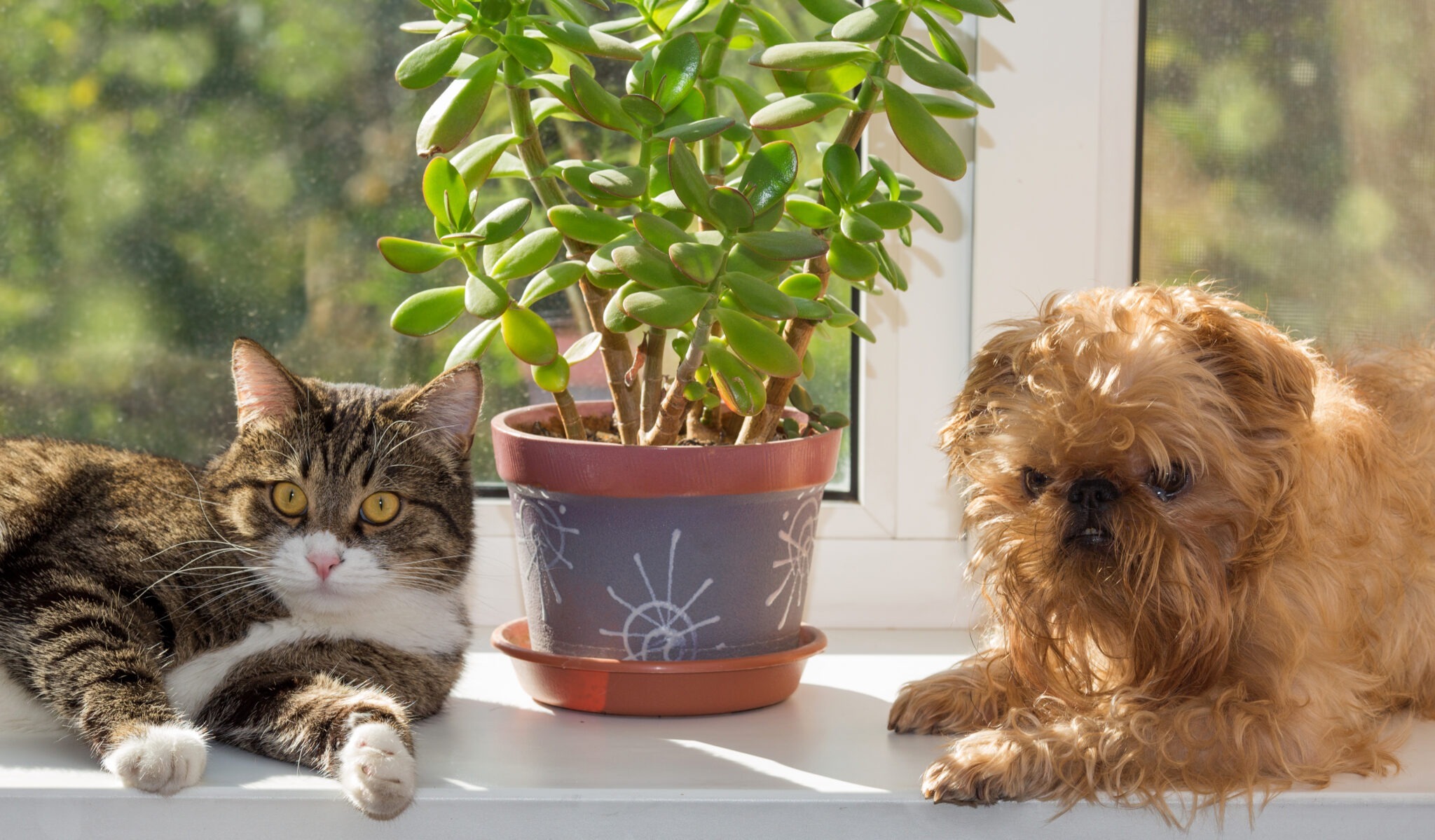Plants are the best way to enhance the beauty of the house. Plants provide a serene look with pure air. Living with the plant is like living and breathing in a green environment. Plants calm the mind and give a refreshing feeling. For people who don’t have pets in their house, it is relatively easy to choose a good plant than those who have pets like dogs and cats. But yes there are some plants that are pet-friendly as well as air purifiers combine with an attractive showy appearance and easy to handle. Therefore given is a detailed description of indoor pet friendly plants.
1. Areca palm
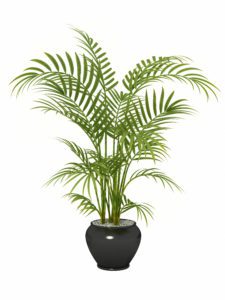
Areca palm belongs to family Arecaceae and the botanical name is Chrysalidocarpus lutescens. Removes acetone, xylene, and toluene from indoor air (1). The plant is non-toxic to cats and dogs.
Know more about the benefits of Areca palm >>
How to take care of Areca palm
Areca palm indoor plant is one of the best air purifiers. Areca palm growth rate mainly depends upon the environment. In the wild condition most of the plants grow up to 100 feet while in the indoor condition, it grows up to 6-7 feet. The main source of Areca palm propagation is by seed. The plant requires good light with proper aerated soil and its lifespan is about 10 years. Regular repotting and proper nourishment in every two years are necessary to avoid Areca palm turning yellow.
2. Bamboo palm
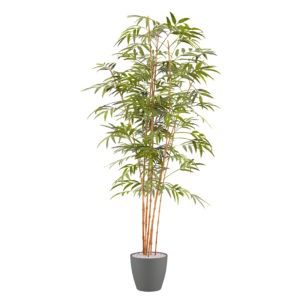
Bamboo palm is scientifically known as Chamaedorea seifrizii.
Helps in providing moisture in the air by evaporating water via photosynthesis. Also helps in removing some potent harmful indoor gases like benzene, trichloroethylene, and formaldehyde (1).
Know more about the benefits of Bamboo Palm >>
How to take care of Bamboo palm
Bamboo palm is an easy maintenance plant. Regular irrigation and proper nourishment in the form of fertilizers during its growth season are sufficient enough.
A healthy bamboo palm can reach up to a height of 5 to 7 ft with a width of 3 ft having 10 to 15 fronds per stem. Regular cutting of brown dead leaves and occasional spraying of the leaves with mild detergent water helps in protecting the plant from mites and other infiltrations
3. Parlor palm
Scientifically known as Chamaedorea elegans is a shade loving plant. Common names is Parlour palm and Neanthe bella palm. This plant much prized for its beautiful foliage and thus a good ornamental low maintenance plant.
How to take care of a parlor palm
The plant requires sandy aerated soil and partial sunlight. Fertilize once a year is good for its growth. The plant reaches up to 12 feet maximum and with a spread of 4-8 inches. Water the plant when topsoil becomes dry.
4. Lady palm
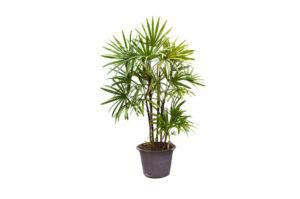
Lady palm or Rhapis excelsa grows up to 4 m height and is native to China and Taiwan. The mode of propagation is mainly via rhizomes. This is easy to care for plant helps in resisting insects and indoor air pollutants. This plant helps in absorbing formaldehyde and ammonia from the indoor air thus is a good air purifying plant.
How to take care of a Lady Palm
It is a hardy plant with little care that is needed. Requires partial deep shade for its growth and survival. Irrigate the plant only when the topsoil of the pot gets dry. Do not overwater the plant as it may cause the rotting of roots.
Know more benefits about lady palm >>
5. Spider plant

Spider plant or Chlorophytum comosum is an ornamental indoor plant native of Africa. This plant is extremely important because of its indoor air purifying capacity and medicinal properties. This plant basically is a small herb that reaches up to 2 feet with tuberous rhizomes (2).
Spider plant is also a beautiful indoor ornamental plant with an air-purifying quality. Spider plant absorbs indoor air pollutants like toluene, formaldehyde, ozone, and hydrocarbons.
How to take care of a Spider plant
This plant is herbaceous in nature. Direct sunlight is necessary for this plant with daily watering. Soil should be well aerated in order to prevent root rotting.
Know more benefits about spider plant>>
6. Tradescantia zebrina
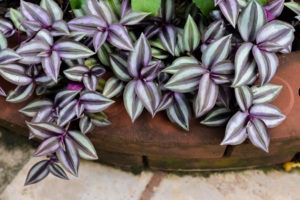
Tradescantia commonly known as spiderwort are herbaceous perennial plants. The genus Tradescantia contains around 75 herbaceous species which are either climber or trailer. One of the most common species of tradescantia is Tradescantia zebrina.
This plant T. zebrina is also known as Wandering Jew. The plant is not only a beautiful ornamental plant but also is full of medicinal properties.
The main pharmacological activities of this plant are anticancer, antioxidant, antibacterial, antitrypanosomal, anti errythemicic, and larvicidal (3).
How to take care of a Tradescantia plant
This plant can be grown in any type of soil and requires moderate sunlight. It can survive both indoor and outdoor. Watering is important. Make sure that you can water the plant every day or whenever the topsoil becomes dry. Fertilize once every two months will be sufficient enough for its normal healthy growth.
Know more about Tradescantia zebrina>>
7. Burro’s tail succulents

Burro’s tail succulents are also known as Donkey tail plants. The botanical name of this succulent is Sedum morganianum. It is a perennial plant with long hanging stems. Fleshy leaves about 2 cm in length and 6-9 mm width are the main characteristic feature of this plant. Beautiful purple-pink flowers grow the terminal part of the stem (4).
This is the most common house plant because of its beautiful ornamental looks and very ease to handle and propagate.
How to take care of Burro’s tail succulents
This plant needs partial sunlight can grow on well-drained soil with proper aeration. Waters only when topsoil becomes dry. Regular watering is not necessary.
8. Howerthea
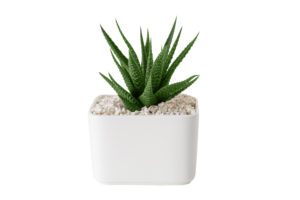
Howerthea is a small beautiful succulent. Propagation and maintenance of this succulent are very easy. Requires indirect sunlight but definitely bright one. Watering the plant only when the topsoil becomes dry. But water sufficiently for its good growth but not daily. Aerated cactus mix with fast-draining potting soil is best for its growth. Fertilize once in a year preferably during summer.
9. Jade plant
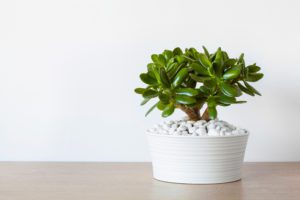
Scientifically known as Crassula ovate is also considered a lucky plant in some cultures. The plant is known for its beautiful fleshy leaves. It requires a good amount of sunlight with proper watering whenever the topsoil becomes dry. Fertilization preferably liquid fertilizer once a year is good for its normal growth.
10. Maidenhair fern

Scientifically known as Adiantum, another common name is walking fern. The plant requires a moist environment with low light and shade. Constant watering at least 4 times a week is necessary. Porous soil with 50% peat is great for the growth. Keep the pot of fern on pebbles with water inside it makes the plant green and protects from drying off. Propagation is via planting small cut portion of parent plant with root. Immediate watering is important. Cover the top surface with mulch to maintain the humidity.
11. Boston fern

Scientifically known as Nephrolepis exaltata. These are easy growing 5 to 4 feet long ferns. Required partial sunlight and high humidity. Propagation is very easy just remove a few leaves of the fern along with roots. Plant it another pot the place it in the shade and water frequently. Within a week and a half new offshoots will come out from the bottom. Boston fern is also helpful in removing toxic substance from the indoor air, therefore, acts as an air-purifying fern plant.
12. Kimberley queen fern
Scientifically known as Nephrolepis obliterata other common name is Australian sword ferns. It is not as famous as Boston ferns but is a good option besides common Boston fern. It is a typical indoor plant which requires a good amount of humidity and indirect sunlight.
13. Lemon balm
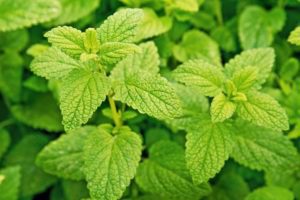
Lemon balm belongs to family Lamiaceae is scientifically known as Melissa officinalis is native to EasterMediterraneanan and western Asia. The plant is used from a very long time in many cultures for the treatment of headache, stomach related problems, neurological and rheumatoid diseases (5).
Lemon balm is a perennial herb measuring from 30 to 80 cm in height and it grows in clumps its propagation is mainly through softwood cutting. The plant requires sunny weather and well-aerated sandy soil rich in organic matter.
Know more about the health benefits of Lemon balm>>
14. Basil

Basil is a beautiful aromatic herb of Ocimum family. This plan is best known for its medicinal value like anti-aging, antioxidants, anti-inflammatory and antimicrobial properties. Basil herbs require a well-drained soil and proper watering with at least 6 hours of sunlight. For best dense growth cut the tip and flowers.
15. Sage
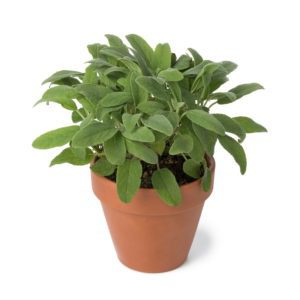
Sage botanical name is Salvia officinalis is another pet-friendly herb which we can grow easily in our house or in our kitchen garden. This herb is also known for its medicinal properties like used for relieving pain, anti-inflammation, against bacterial and viral infections.
How to take care of a sage plant
This is a perennial evergreen plant that requires partial sunlight this is a good option for indoor gardening. Require watering daily or when the topsoil gets dry. Fertilize once every three months.
16. Mint
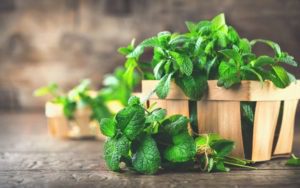
Mentha piperita L. of family Lamiaceae is a perennial herb. This plant is easy to grow and maintain. Known for its beautiful aromatic smell and flavor. Mint is also medicinally very valuable and helps in curing diseases like diarrhea, upset stomach, anorexia, cramping, and renal problems.
How to take care of a mint plant
Propagation of mint is very easy by stem cutting and dipping it in water for 3 to 4 days until roots develop then potting in well-aerated soil. Mint plant requires indirect and direct sunlight. Watering the plant daily or whenever the topsoil becomes dry.
17. Christmas cactus

This cactus is also known as holiday cactus, thanksgiving cactus or Easter cactus. The plant is well known for its beautiful foliage and colorful flowers. This plant requires indirect sunlight but occasionally bright light is good enough for its proper good bloom. Proper well-drained soil is required with frequent watering whenever the topsoil gets dry. Over excessive watering causes the root rot. Always make sure the plants do not get waterlogged.
Read more about air purifying plants
- 14 Best indoor air purifying plants
- Snake Plant (Sansevieria) indoor air purifying indoor plant
- Areca Palm (Chrysalidocarpus lutescens) indoor air purifying plant
- Bamboo Palm ( Chamaedorea seifrizii ) indoor air purifying plant
- Syngonium (Arrowhead) indoor air purifying plant
